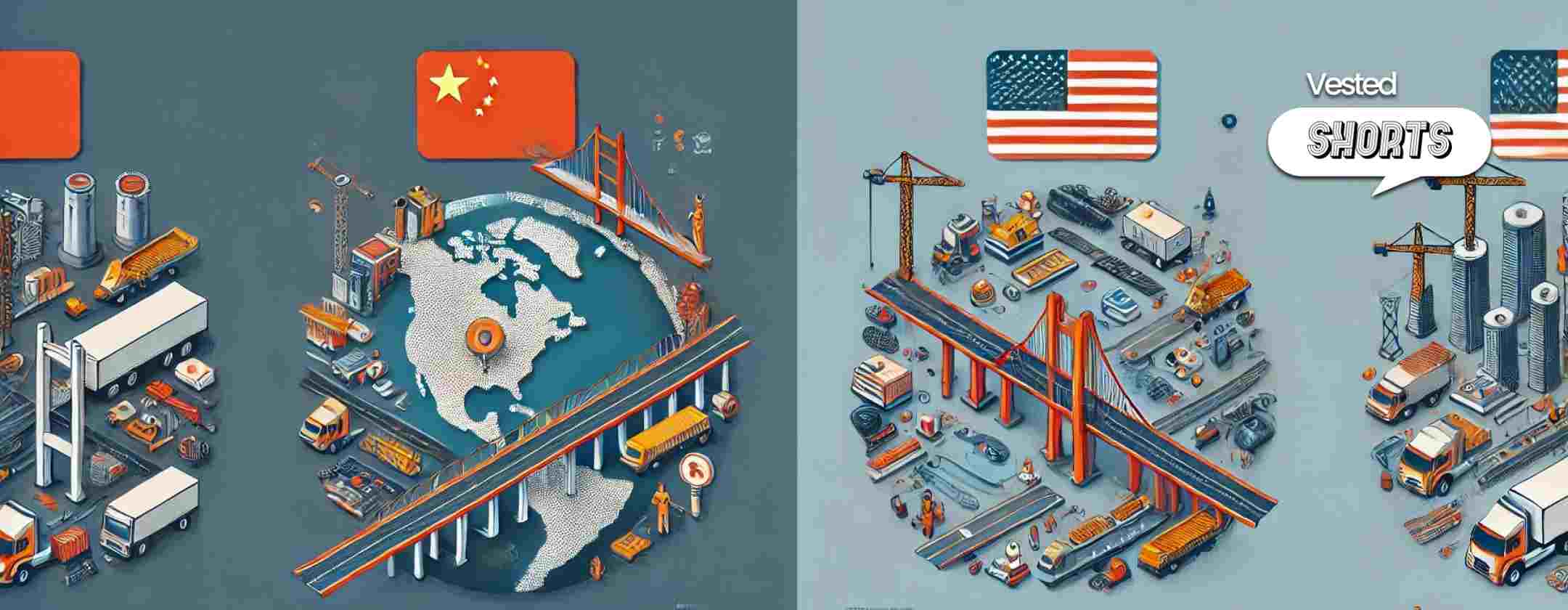In today’s edition,
- Huawei in China
- OpenAI’s ambitious funding aspirations
- Infrastructure dominance: China versus USA
- PayPal’s cryptocurrency endeavours
Market Snapshot
The major U.S. stock indexes concluded a strong week, each recording five consecutive days of gains for the first time in a month, driven by anticipation of Federal Reserve rate cuts. The Federal Open Market Committee (FOMC) is expected to decide on reductions between 25 to 50 basis points at its meeting next Wednesday, with sentiment bolstered by former New York Fed Chair William Dudley’s support for a substantial 50 basis point cut.
The S&P 500 closed the week up 3.4% at 5,626.02, reflecting optimism about potential economic stimulation from the anticipated rate cuts. The Dow Jones Industrial Average rose 2.1% to 41,393.78, and the Nasdaq Composite led gains with a 5% increase, ending at 17,683.98. This performance highlights strong investor confidence, particularly in tech stocks, ahead of the Fed’s upcoming policy decision.
Stock market closing data for the week of Sep 9th to Sep 13th, 2024
News Summaries
On the global stage, China has been very active through its Belt and Road Initiative, investing $679 billion in infrastructure projects worldwide from 2013 to 2021. Compare that to the U.S., which spent just $76 billion in the same timeframe. China’s funding has kicked off major projects like railways in Kenya and power plants in Angola, mostly aiding poorer nations. Their biggest single investment was $104 billion to Russia, underscoring strong ties between the two. While these investments significantly boost China’s influence and meet huge infrastructure needs, they’re not without drawbacks. The report highlighted issues such as environmental pollution and violations of indigenous land rights. It also mentioned corruption, including a bribe to support a Chinese project. Nevertheless, many countries are drawn to Chinese financing for its speed and ease. In contrast, U.S. aid is seen as limited and hard to get. This makes it difficult for the U.S. to keep up with China’s growing influence.
OpenAI is set to raise over $5 billion, aiming for a valuation of $150 billion, a significant jump from its previous $86 billion. This fundraising, led by Thrive Capital, seeks to secure vital capital as OpenAI develops AI technologies superior to human intelligence, positioning it ahead of competitors like Anthropic, Google, and Meta. The potential fundraising could exceed $6.5 billion. Major tech firms, including Apple, Nvidia, and Microsoft, are discussing their investments. Microsoft has already committed $13 billion. OpenAI’s $2 billion annual revenue masks a critical problem: mounting losses. Why? Skyrocketing AI development costs. The solution? A strategic funding push. This move aims to fuel innovation and secure market leadership. As smaller AI firms vanish into tech giants, competition intensifies. OpenAI’s response? Double down on advancement. The AI landscape evolves rapidly, demanding ever-increasing investment. OpenAI’s strategy addresses this challenge head-on, positioning itself to thrive in a fiercely competitive market.
Huawei launched the $2,800 trifold Mate XT, securing 5 million pre-orders in its debut week. This coincided with Apple’s iPhone 16 launch, which struggled in China. The main reason was the lack of Apple Intelligence services there. Additionally, iPhone sales dropped by 10% in the first quarter of 2024. This was mainly due to increased competition. Huawei’s Kirin 9010 5G chip, powering the Mate XT, defies U.S. tech sanctions. This breakthrough propels the company to the forefront of the foldable smartphone market. Global demand for these devices surged 49% in Q1 2024, with Huawei now leading the pack. Their success showcases resilience and innovation in the face of international restrictions.
From the World of Crypto
PayPal (Explore: PYPL) is significantly enhancing its presence in the cryptocurrency vertical.
First up, they’re rolling out .eth addresses to PayPal and Venmo users. This move simplifies sending Ethereum tokens. It replaces complex codes with easier-to-remember names, like “sendme.eth.”
With PayPal and Venmo’s massive combined user base of over 355 million in the US, compared to Ethereum’s 13.8 million active addresses, this could seriously boost the mainstream use of Ethereum.
Then there’s $PYUSD, PayPal’s own stablecoin, which has soared to a market cap of over $1 billion in just over a year.
It’s quickly catching up to the supply volume of $USDT on Solana, the crypto heavyweight. This rapid growth not only shows PayPal’s ability to scale in the crypto market but also positions $PYUSD as a potential leader among stablecoins.
PayPal has also made it super easy for folks to use their crypto for everyday purchases. Through their ‘crypto at checkout’ feature, US customers can shop with crypto at 10.9 million online merchants. At checkout, PayPal converts the crypto to fiat seamlessly and settles with merchants in USD, bridging the gap between digital currencies and everyday shopping.
Looking ahead, PayPal’s big opportunity could hinge on clearer US crypto regulations.
Currently, unclear regulations stop PayPal from offering high yields on crypto. However, if the rules become clearer, it could offer attractive yields on $PYUSD. This might turn users into stablecoin savers. So, being patient could be key. It could boost $PYUSD holders and enhance PayPal’s crypto market position.













Ive read several just right stuff here Certainly price bookmarking for revisiting I wonder how a lot effort you place to create this kind of great informative website